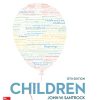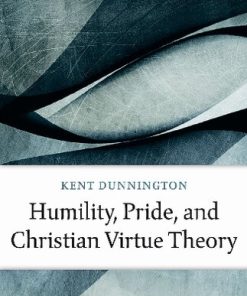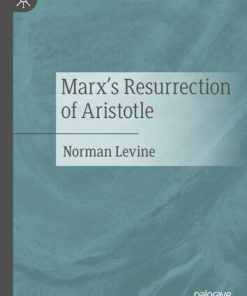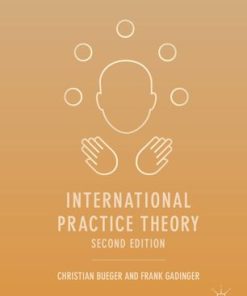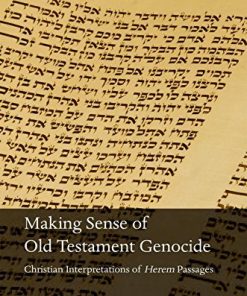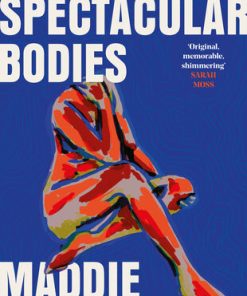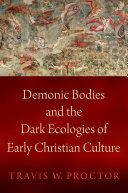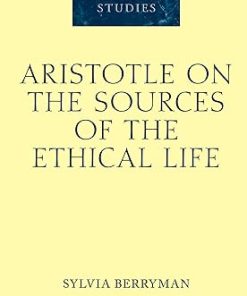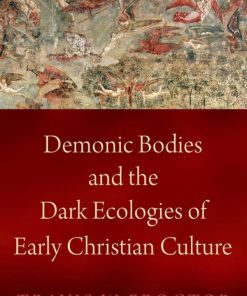Aristotle’s Theory of Bodies 1st edition by Christian Pfeiffer 0191085307 9780191085307
$50.00 Original price was: $50.00.$25.00Current price is: $25.00.
Aristotle’s Theory of Bodies 1st edition by Christian Pfeiffer – Ebook PDF Instant Download/DeliveryISBN: 0191085307, 9780191085307
Full download Aristotle’s Theory of Bodies 1st edition after payment.

Product details:
ISBN-10 : 0191085307
ISBN-13 : 9780191085307
Author : Christian Pfeiffer
Christian Pfeiffer explores an important, but neglected topic in Aristotle’s theoretical philosophy: the theory of bodies. A body is a three-dimensionally extended and continuous magnitude bounded by surfaces. This notion is distinct from the notion of a perceptible or physical substance. Substances have bodies, that is to say, they are extended, their parts are continuous with each other and they have boundaries, which demarcate them from their surroundings. Pfeiffer argues that body, thus understood, has a pivotal role in Aristotle’s natural philosophy. A theory of body is a presupposed in, e.g., Aristotle’s account of the infinite, place, or action and passion, because their being bodies explains why things have a location or how they can act upon each other. The notion of body can be ranked among the central concepts for natural science which are discussed in Physics III-IV. The book is the first comprehensive and rigorous account of the features substances have in virtue of being bodies. It provides an analysis of the concept of three-dimensional magnitude and related notions like boundary, extension, contact, continuity, often comparing it to modern conceptions of it. Both the structural features and the ontological status of body is discussed. This makes it significant for scholars working on contemporary metaphysics and mereology because the concept of a material object is intimately tied to its spatial or topological properties.
Aristotle’s Theory of Bodies 1st Table of contents:
1: Introduction
PART I: Putting the Theory of Bodies in its Place
2: A Remark on the Notion of Body
3: Body in the Context of Physical Science
3.1. The Importance of an Account of Body for Physical Science
3.2. The Connection Between Physics III–IV and the Study of Body
3.2.1. A remark on Physics III–IV
3.2.2. Body as part of the conceptual underpinnings of physical science
3.2.3. Further evidence from On Generation and Corruption
3.3. A Physical Study of Body
3.3.1. Why the study of bodies belongs to physical science
3.3.2. More exemplary cases
3.3.3. The limits of the study of physical bodies
4: Mathematics and Physical Science
4.1. The Theory of Physics II.2
4.1.1. Studying X but not qua Y
4.1.1.1 a remark on x qua y
4.1.1.2 magnitudes, but not qua physical
4.1.2. Separation and falsity
4.1.3. The snub example
4.2. The Mathematician and the Physicist
4.2.1. The most important results reviewed
4.2.2. Drawing on mathematical results
PART II: The Theory of Bodies
5: Body in Categories 6
5.1. Introduction and Framework
5.2. The Continuous and the Discrete
5.2.1. The definition of the continuous and the discrete
5.2.2. Getting the quantifiers right
5.2.3. Defining the continuous and the discrete
5.2.4. Some limitations of the theory
5.2.5. Is it really the definition of continuity?
5.2.5.1 continuity and connection
5.2.5.2 continuity and divisibility
5.3. Having Parts with Position versus Having Parts without Position
5.3.1. PPos considered
5.3.2. Position, place, and space
5.3.3. Further evidence on thesis
5.3.4. Thesis and the six spatial directions
5.3.5. A classification of bodies
6: A Topological Conception of Bodies
6.1. Introduction
6.2. Bodies are Complete
6.2.1. De Caelo on the completeness of bodies
6.2.1.1. aristotle’s arguments for the priority of bodies
6.2.1.2. what does teleion mean?
6.2.2. Substantiality and the dimensions
6.2.2.1. quantity is not a substance
6.2.2.2. three-dimensionality and priority in substance
6.2.2.3. substance, causes, and dimensionality
6.3. Bodies and Limits
6.3.1. An account of limits
6.3.2. Internal and outer boundaries
6.3.2.1. boundary in and boundary of
6.3.2.2. boundaries and the (topological) form of an object
6.3.3. The relation of bodies and their limits
6.3.3.1. does the question make sense?
6.3.3.2. bodies include their limits
6.3.4. The ontology of boundaries
6.3.4.1. the ontology and dependence of boundaries
6.3.4.2. boundaries and properties
6.3.4.3. boundaries versus parts
6.4. The Matter of Body
6.4.1. Two meanings of ‘matter’ distinguished
6.4.2. An account of extension
6.4.3. Why is the interval indeterminate?
6.4.4. The ontology of extension
6.4.4.1. independent and dependent extension
6.4.4.2. the matter of magnitude
6.4.5. The divisibility of matter and extension
6.4.5.1. the place of the argument
6.4.5.2. the argument against composition fromlower-dimensional entities
6.4.5.3. matter without foundation
7: Contact and Continuity
7.1. Introduction
7.2. Contact and Continuity—the Formal Theory
7.2.1. The first definitions: coincidence, separation, and contact
7.2.1.1. coincidence and separation
7.2.1.2. contact
7.2.2. The second definitions: in succession, contiguity, and continuity
7.2.2.1. being in succession
7.2.2.2. contiguity
7.2.2.3 continuity
7.3. Contact and Continuity—the Metaphysical Theory
7.3.1. The possibility of contact
7.3.1.1. why the boundaries have to be coincident
7.3.1.2. why two limits?
7.3.2. Continuity and the ontology of physical objects
7.3.2.1. why one boundary, rather than two?
7.3.2.2. identical or unified boundaries?
7.3.2.3. do all boundaries have the same status?
7.4. Continuity, Causality, and Unity
7.4.1. Continuity and causality
7.4.2. Continuity, causality, and the instantiation of a form
7.4.2.1. causality and form in metaphysics v.6
7.4.2.2. causality and metaphysical predication in metaph. viii.2
8: Conclusions
PART III: Appendices
Appendix A: Metaphysics V.13
People also search for Aristotle’s Theory of Bodies 1st:
aristotle theory biology
aristotle’s theory of evolution
aristotle’s theory of atoms
aristotle’s theory of the mean
aristotle’s theory of ethics
Tags: Aristotle, Theory of Bodies, Christian Pfeiffer, important, theoretical philosophy
You may also like…
Politics & Philosophy - Anthropology
Politics & Philosophy
Politics & Philosophy
International Practice Theory 2nd ed. Edition Christian Bueger
Religion & Spirituality - Bible
Fiction - Literary Fiction
Politics & Philosophy - Anthropology
Aristotle on the Sources of the Ethical Life 1st Edition Sylvia Berryman
Religion & Spirituality - Christianity
Demonic Bodies and the Dark Ecologies of Early Christian Culture
Business & Economics
The Agile Imperative: Teams, Organizations and Society under Reconstruction? 1st Edition


